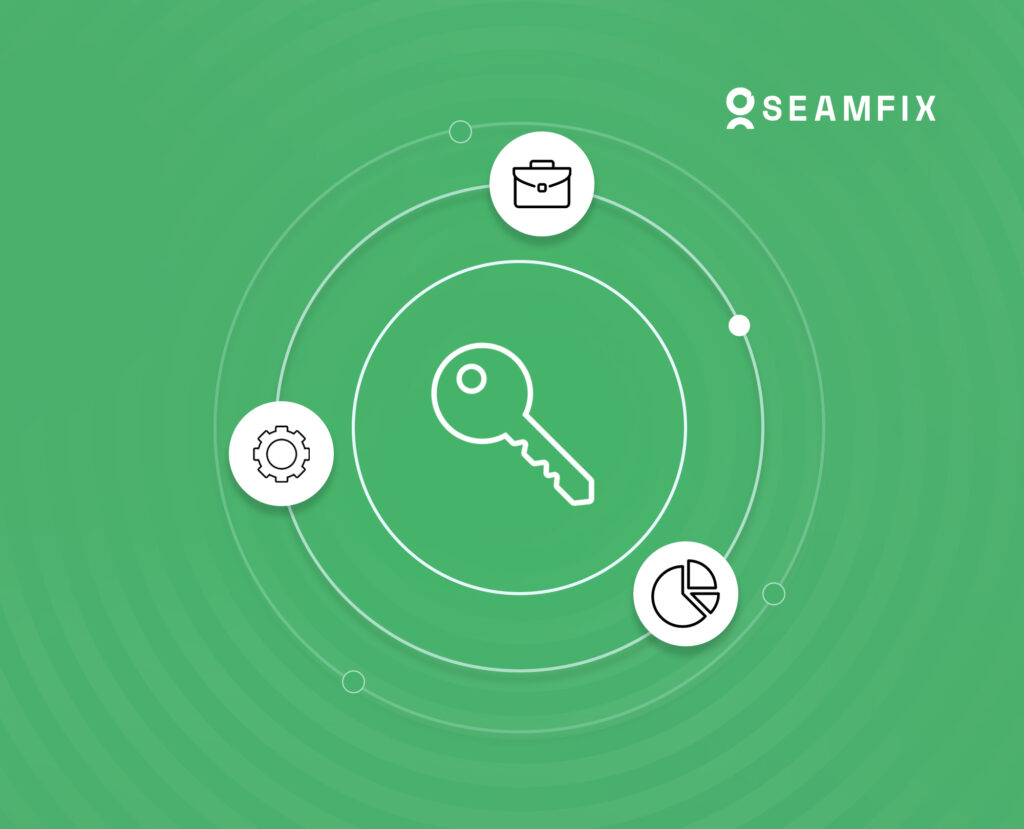Imagine you’re hosting a party. You’ve got a guest list, but instead of just checking names, you’re also looking at other factors: Are they wearing the right dress code? Did they RSVP? Are they arriving during the party hours? This extra layer of checks ensures that only the right people get in, at the right time, and in the right way. In the digital world, this concept is called Attribute-Based Access Control (ABAC), and it’s a powerful way to manage who has access to what in your organization.
In this blog, we’ll break down what ABAC is, how it works, and why it’s such a game-changer. We’ll also explore when to use it and how solutions like Seamfix iAM can make implementing ABAC a breeze. Whether you’re an IT pro or just someone curious about how organizations stay secure, this guide is for you.
What is Attribute-Based Access Control (ABAC)?
Let’s start with the basics. Attribute-Based Access Control (ABAC) is a method of managing access to systems and data based on a combination of attributes. These attributes can include:
- User Attributes: Job title, department, location, security clearance.
- Resource Attributes: File type, sensitivity level, ownership.
- Environmental Attributes: Time of day, location of access, device type.
Unlike Role-Based Access Control (RBAC), which focuses on roles, ABAC takes a more granular approach. It considers multiple factors to make access decisions, making it more flexible and dynamic.
Think of it like a bouncer at a club who doesn’t just check your ID but also looks at what you’re wearing, whether you’re on the guest list, and if it’s the right time for entry. ABAC is that bouncer for your digital systems.
Why ABAC Matters
So, why should you care about ABAC? Here are a few reasons:
- Granular Control: ABAC allows you to define very specific access rules based on multiple attributes, giving you fine-tuned control over who can access what.
- Flexibility: Because ABAC considers so many factors, it can adapt to complex and changing environments.
- Security: By using multiple attributes to make access decisions, ABAC reduces the risk of unauthorized access.
- Compliance: Many industries have regulations that require strict control over access to sensitive data. ABAC helps you meet these requirements.
How ABAC Works
ABAC is built on the concept of policies that evaluate attributes to make access decisions. Here’s how it works in practice:
- Define Attributes: Identify the attributes that matter for your organization, such as user roles, resource types, and environmental factors.
- Create Policies: Write policies that use these attributes to make access decisions. For example, “Managers in the Finance department can access budget files only during business hours from the office network.”
- Evaluate Requests: When a user tries to access a resource, the system evaluates the request against the policies. If the attributes match the policy, access is granted. If not, access is denied.
Real-World Use Cases for ABAC
Still not convinced? Here are some real-world examples of how ABAC can make a difference:
1. Protecting Sensitive Data
- In a healthcare organization, only doctors and nurses should have access to patient records, and only during their shifts. ABAC can enforce this by considering the user’s role, the time of day, and the sensitivity of the data.
2. Remote Work Security
- With employees working from home, ABAC can ensure that sensitive data is only accessible from secure devices and networks. For example, “Employees can access financial data only from company-issued laptops connected to the VPN.”
3. Time-Based Access
- Some resources should only be accessible during certain times. ABAC can enforce this by considering the time of day. For example, “Employees can access the timekeeping system only during their scheduled shifts.”
4. Compliance and Auditing
- Many industries have regulations that require strict control over access to sensitive data. ABAC helps you meet these requirements by providing detailed logs and reports of access decisions.
When to Use ABAC
ABAC is incredibly powerful, but it’s not always the right choice. Here are some scenarios where ABAC shines:
- Complex Environments: If your organization has complex access needs that can’t be easily defined by roles alone, ABAC is a great fit.
- Dynamic Policies: If your access policies need to change frequently based on factors like time, location, or device, ABAC can adapt more easily than RBAC.
- High Security Needs: If you’re dealing with highly sensitive data and need granular control over access, ABAC provides the level of security you need.
- Regulatory Compliance: If your industry has strict regulations around data access, ABAC can help you meet those requirements.
How Seamfix iAM Simplifies ABAC Implementation
Now, let’s talk about how Seamfix iAM can help. Seamfix iAM is a modern IAM solution that includes robust ABAC capabilities. Here’s why it’s a great choice for your organization:
- User-Friendly: Seamfix iAM’s ABAC is designed with the end-user in mind. It’s easy to set up and use, even for non-tech-savvy employees.
- Flexible: Whether you’re managing a small team or a large enterprise, Seamfix iAM can scale to meet your needs.
- Secure: With features like Multi-Factor Authentication (MFA) and encryption, Seamfix iAM ensures that your data stays secure.
- Comprehensive: Seamfix iAM supports both RBAC and ABAC, giving you the flexibility to choose the right approach for your organization.
For example, imagine you’re managing access to sensitive financial data. With Seamfix iAM, you can create a policy that says, “Only Finance managers can access budget files from company-issued laptops during business hours.” It’s ABAC made simple.
Tips for Implementing ABAC
Here are some tips to help you get the most out of ABAC:
- Start with a Plan: Identify the attributes and policies that matter for your organization.
- Involve Key Stakeholders: Get input from IT, HR, and other relevant teams to ensure everyone’s needs are met.
- Communicate with Users: Let employees know why ABAC is being implemented and how it will benefit them.
- Monitor and Optimize: Keep an eye on how the system is performing and make adjustments as needed.
Final Thoughts
Attribute-Based Access Control (ABAC) is the secret to managing access in a way that’s secure, flexible, and compliant. By considering multiple attributes to make access decisions, ABAC gives you the granular control you need to protect your organization’s most sensitive data.
And with solutions like Seamfix iAM, implementing ABAC has never been easier. It’s designed to make the process seamless, scalable, and user-friendly—so you can focus on what really matters: running your business.
So, what are you waiting for? Take the first step toward better access control by exploring how Seamfix iAM can help.
Ready to learn more? Check out Seamfix iAM and its ABAC capabilities here.






